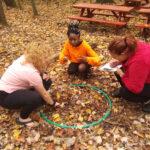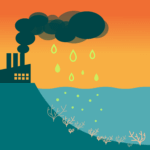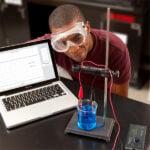
Sharing ideas and inspiration for engagement, inclusion, and excellence in STEM
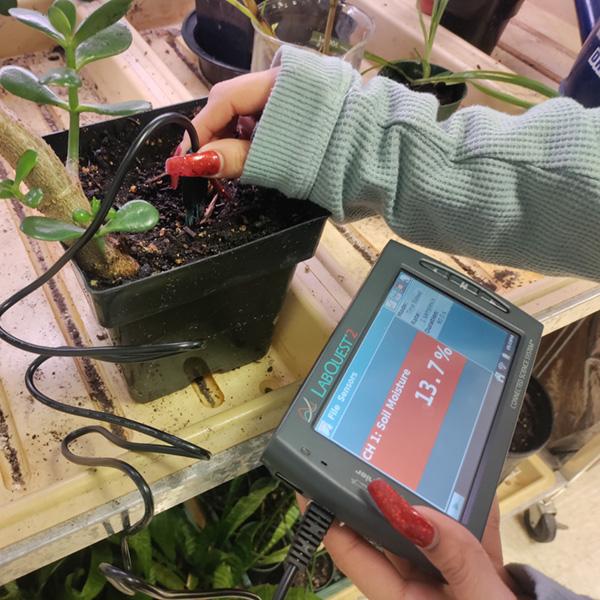
Over the 30 years that Joel Rudderow has been teaching agricultural science, the agricultural industry has changed a great deal. With advances in everything from machinery to irrigation, the work that farmers do today looks a lot different from what their predecessors did.
For more than a decade, Vernier sensors have been helping Rudderow provide his students with learning experiences to keep up with these changes in the industry.
Rudderow teaches six agricultural science classes at Penns Grove High School in Carneys Point, New Jersey. Five of these classes are part of the Curriculum for Agricultural Science Education (CASE)—and they all give students real-world experience with modern agriculture through Vernier technology.
“I cannot stress enough how important it is that these products are so readily available for schools because they are mirroring what is being used in the ag industry,” Rudderow said. “People in the industry are using sensors and other technology to get better and more detailed data.”
“So, as CASE teachers, we are more realistically modeling what’s being done in the ag industry,” he continued. “My students aren’t using the exact same stuff that’s being used in the field, but that’s irrelevant. What’s important is that they are getting some exposure to what is being used now.”
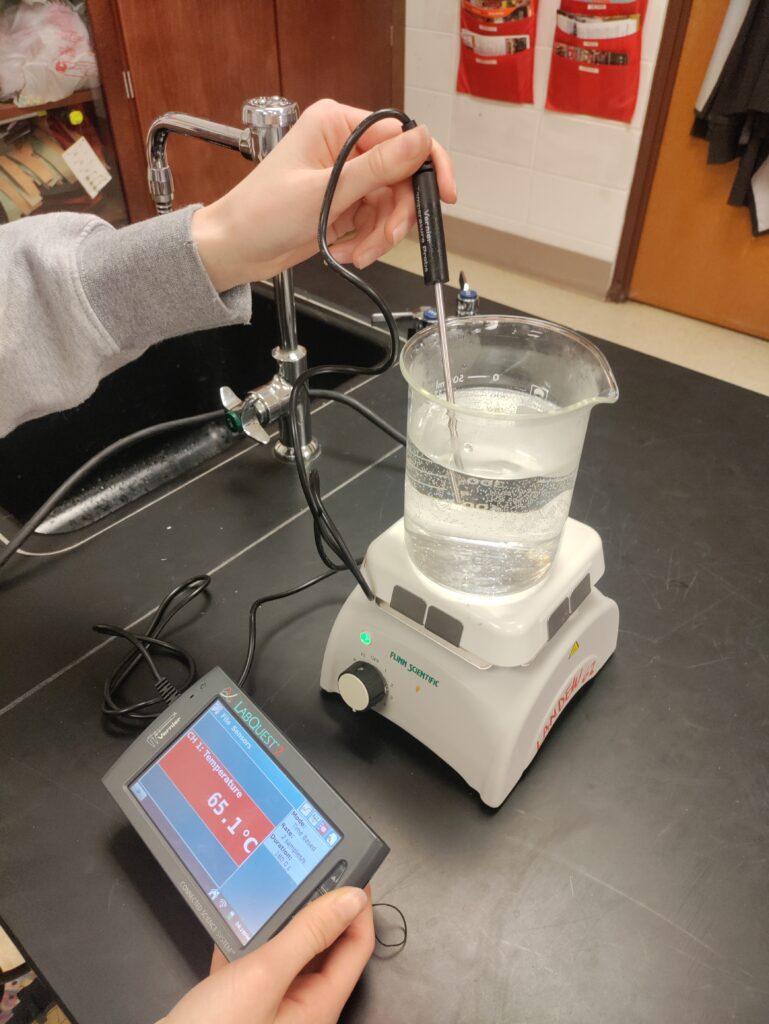
User-Friendly Solutions for Introductory and More Advanced Courses
Rudderow learned about Vernier technology in 2012 at his first CASE training, where he was introduced to LabQuest® (an integral part of CASE classes). Fast-forward to today, and Rudderow has 22 kinds of Vernier sensors that he uses across his agricultural science classes.
“I don’t consider myself to be a brand-loyal person,” he said. “However, I am loyal to Vernier—these are products that I believe in. They are durable and easy to use, and over the years, my students have gained so much from this technology.”
Rudderow uses up to 20 kinds of Vernier sensors in each of his classes. For instance, in Introduction to Agriculture, Food, and Natural Resources, students use the following products:
“This equipment is very good for first-year students because it’s very user-friendly,” Rudderow said. “Once they learn the basics, it becomes very intuitive—especially when they use it in other courses.”
For instance, students who take Rudderow’s upper-level plant science course use many of the sensors they encountered in the introductory class. They also use Vernier spectrometers to study how red light, green light, and black light affect plant growth.
“LEDs have become standard in greenhouses,” Rudderow said. “The spectrophotometers help students understand how and why different lights are used.”
Classroom Learning that Mirrors Real-World Applications
Professionals in the industry have helped Rudderow stay abreast of developments in agriculture, and he incorporates what he learns into his classes so that his students have the most up-to-date information.
“In the ag industry, sensing equipment is being used regularly,” Rudderow said. “We have sheep and goats, and I buy their hay from a farmer whose baler has a moisture sensor. So, as he is baling hay, he can see in his tractor what the moisture content is. That means he has the data to know, ‘Oh, wait, these bales are going to be wet. I should wait a couple of hours—or another day.’”
With their ability to collect data in real time, Vernier sensors mimic this real-world phenomenon; students who take Rudderow’s plant science course use the Vernier Soil Moisture Sensor to study the effect of soil moisture on plant growth over several weeks.
Additionally, students in this class build hydroponic systems and maintain plants for a month while they collect data using Vernier sensors. This project also mirrors what is going on in the industry.
“Friends of ours are vegetable growers, and they have a hydroponic greenhouse for tomatoes,” Rudderow said. “In every plant container, there’s a nutrient sensor, a temperature sensor, and a moisture sensor. The greenhouse itself has a carbon dioxide sensor. So, it’s all there; it’s all being used in the industry.”
Benefits for All Students, Regardless of Agricultural Experience
At Penns Grove High School, most of the students live in suburban areas and small towns. In addition, few have a background in agriculture—and Rudderow said most will not go into farming after they graduate.
However, he also said the CASE curriculum, combined with the use of Vernier technology, provides all his students with valuable hands-on learning experiences that promote STEM literacy.
“The beauty of CASE is that it’s everywhere; in every state, in both rural areas and urban areas, thousands of teachers use it,” Rudderow said. “So, all these students are getting exposed to the curriculum, and even if they don’t go into agriculture, they’re learning important scientific concepts and gaining valuable skills. And using Vernier equipment is key.”
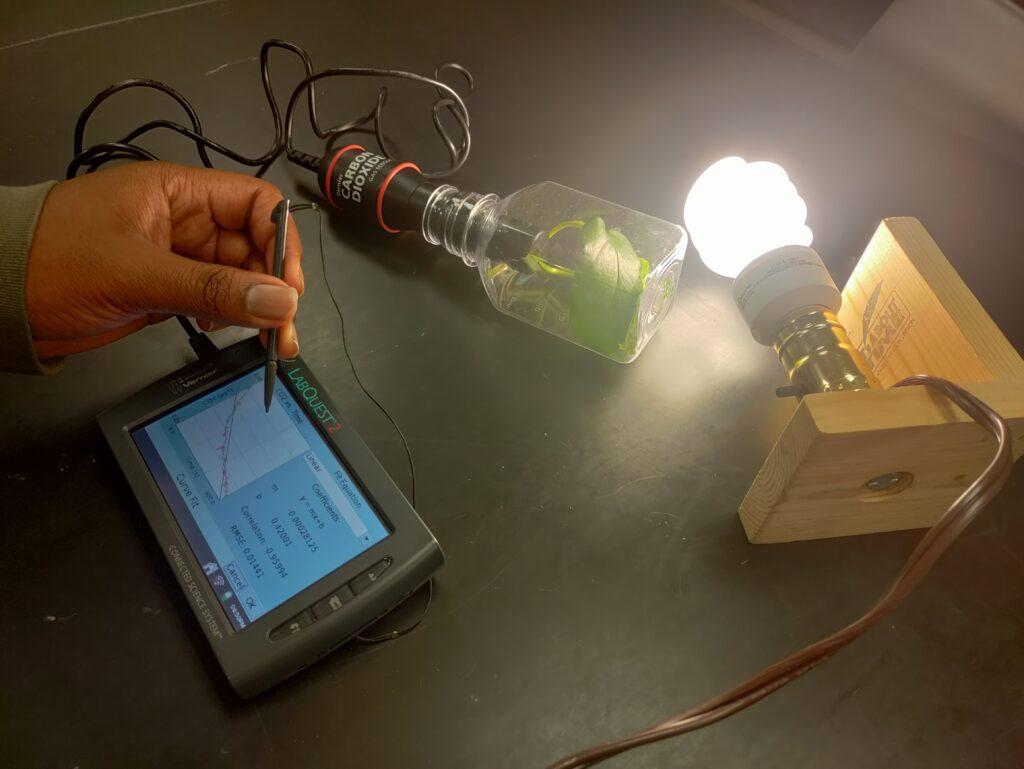
Rudderow also said many of his students are interested in environmental science and that Vernier technology is a great way to explore this subject area. As an example, he cited an activity in the CASE curriculum that involves having students test water quality from a stream.
“They use Vernier equipment to test the temperature, the pH, the total dissolved solids using a conductivity probe, the dissolved oxygen content, and the turbidity,” Rudderow said. “Those are the kinds of tests that are being done by environmental scientists and the Environmental Protection Agency.”
“So, beyond agriculture, this is important stuff for anyone who is going into environmental science—or who simply cares about the environment,” he continued. “Being able to use those tools and gaining that awareness are crucial.”
To learn more about CASE courses and learning opportunities, visit the CASE website.
To learn more about Vernier solutions for hands-on agricultural science education, visit our website.
Share this Article

Sign up for our newsletter
Stay in the loop! Beyond Measure delivers monthly updates on the latest news, ideas, and STEM resources from Vernier.

